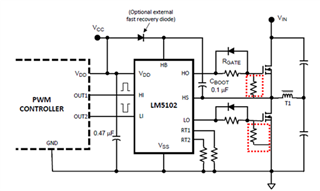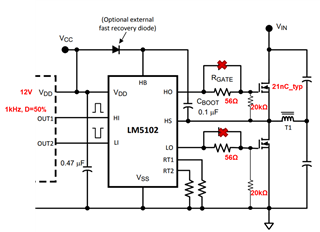Other Parts Discussed in Thread: LM5106, TINA-TI, LM5109B
Hi Team,
I have a simple question about LM5102 HO/LO state when VDD is 0V and 0~9V(below recommended operating conditions).
Hi-Z, pull up, pull down?
I think 0~9V is unknown state though.
Regards,
Kai



